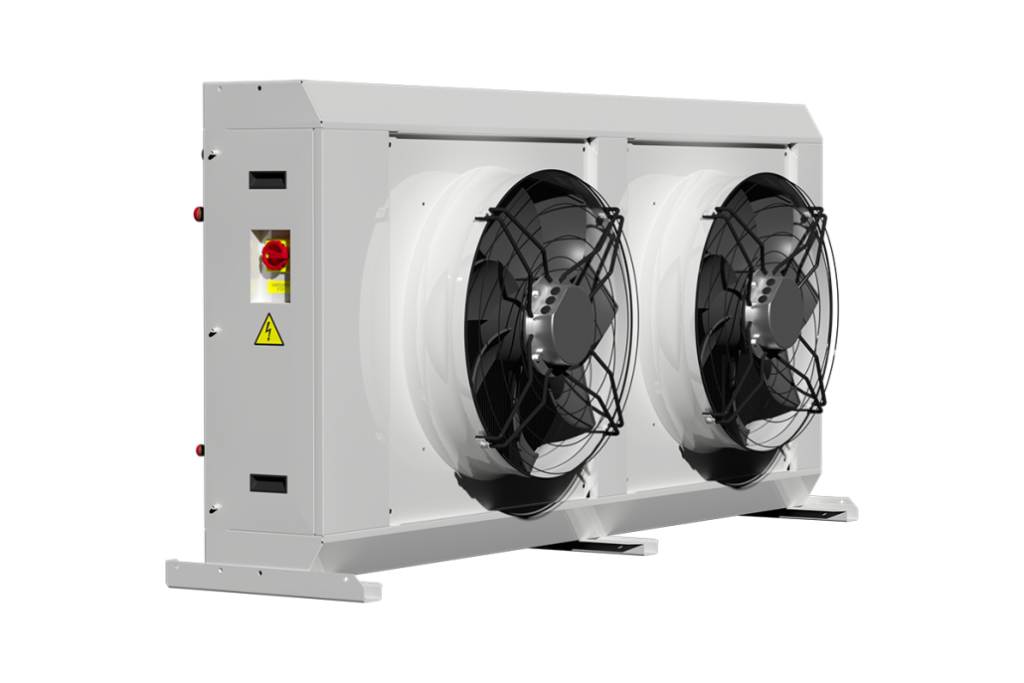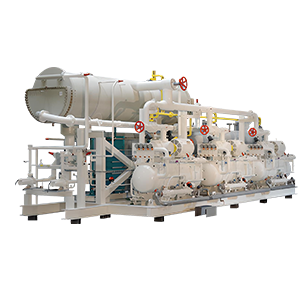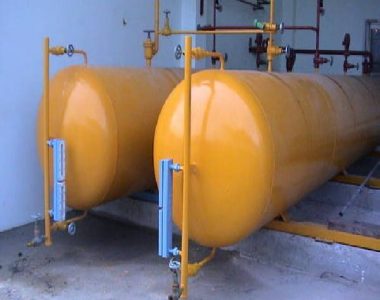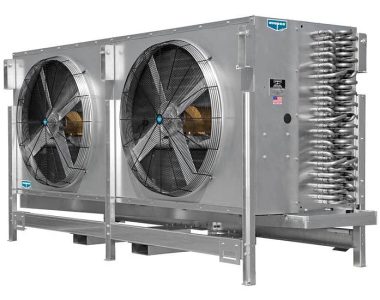
Refrigeration condensers are vital components in both Freon and ammonia-based refrigeration systems. These systems play a crucial role in maintaining proper temperature levels in various applications such as commercial refrigeration, air conditioning, and industrial processes. Below, I’ll provide details on condensers in both types of systems:
Freon Refrigeration System:
- Types of Condensers:
- Air-Cooled Condenser: Uses ambient air to remove heat from the refrigerant.
- Water-Cooled Condenser: Utilizes water to cool down the refrigerant.

- Working Principle:
- The high-pressure, high-temperature refrigerant vapor from the compressor enters the condenser.
- In the air-cooled condenser, the refrigerant releases heat to the surrounding air through metal fins and tubes.
- In the water-cooled condenser, the refrigerant transfers heat to the water flowing through the condenser tubes.
- As the refrigerant loses heat, it condenses into a high-pressure liquid.
- The condensed liquid refrigerant then flows to the expansion valve or capillary tube to enter the evaporator.
- Components:
- Coils or tubes: These provide surface area for heat transfer.
- Fans (for air-cooled condensers): Aid in the removal of heat by blowing air across the condenser coils.
- Water inlet/outlet connections (for water-cooled condensers): Allow for the circulation of water to remove heat.
- Advantages:
- Freon-based systems are commonly used in commercial and residential applications due to their efficiency and ease of use.
- They typically require less maintenance compared to ammonia systems.
- Freon has good heat transfer properties and is non-toxic.
Ammonia Refrigeration System:
- Types of Condensers:
- Shell and Tube Condenser: Consists of tubes through which ammonia flows, surrounded by a shell through which cooling water flows.
- Atmospheric Condenser: Utilizes atmospheric air to cool down the refrigerant.
- Working Principle:
- Similar to Freon systems, the high-pressure, high-temperature ammonia vapor enters the condenser.
- In a shell and tube condenser, ammonia transfers heat to the cooling water flowing through the tubes.
- In an atmospheric condenser, the ammonia transfers heat to the surrounding air.
- Ammonia condenses into a high-pressure liquid, which is then fed to the expansion valve and subsequently to the evaporator.
- Components:
- Tubes or coils: Provide surface area for heat transfer.
- Shell (for shell and tube condensers): Houses the tubes and allows for the passage of cooling water.
- Fans (for atmospheric condensers): Aid in the removal of heat by blowing air across the condenser coils.
- Advantages:
- Ammonia is an efficient refrigerant with excellent heat transfer properties, making it suitable for large-scale industrial applications.
- Ammonia-based systems are environmentally friendly as they have zero ozone depletion potential and low global warming potential.
- Ammonia has high refrigeration capacity per unit volume, allowing for smaller equipment sizes compared to Freon systems.
Evaporative condensers are another type of condenser used in refrigeration systems, offering certain advantages over traditional air-cooled and water-cooled condensers. Here’s an overview of evaporative condensers in both Freon and ammonia refrigeration systems:
Evaporative Condensers:
- Types of Evaporative Condensers:
- Single-Effect Evaporative Condenser: Utilizes water evaporation to remove heat from the refrigerant.
- Double-Effect Evaporative Condenser: Uses both water evaporation and air cooling to enhance heat removal efficiency.
- Working Principle:
- Evaporative condensers combine the functions of both condensation and cooling in a single unit.
- The hot refrigerant vapor enters the condenser coil where it releases heat to the surrounding air.
- Simultaneously, water is sprayed over the condenser coil, facilitating evaporation.
- The evaporation of water absorbs additional heat from the refrigerant, further cooling it down.
- The cooled refrigerant condenses into a liquid state and is collected at the bottom of the condenser for further processing.
- Components:
- Condenser Coil: Provides a surface for heat exchange between the refrigerant vapor and the surrounding air.
- Water Distribution System: Distributes water evenly over the condenser coil for efficient evaporation.
- Fans: Help in drawing air over the condenser coil and aid in the evaporation process.
- Water Collection Pan: Collects the water that has evaporated and dripped off the condenser coil for recirculation.
- Advantages:
- Evaporative condensers offer higher heat rejection efficiency compared to air-cooled condensers, especially in high ambient temperature conditions.
- They typically require less water usage compared to traditional cooling towers.
- Evaporative condensers are suitable for applications where water conservation is a concern.
- They are particularly beneficial in regions with hot climates or where water availability is limited.
The cascade refrigeration system is a specialized configuration that utilizes two separate refrigeration cycles working together to achieve very low temperatures. This system is often employed in applications where extremely low temperatures are required, such as in pharmaceutical, chemical, and food processing industries. The latest technology in cascade systems focuses on improving efficiency, reliability, and environmental sustainability. Here’s an overview:
Latest Technology in Cascade Refrigeration Systems:

- Advanced Compressor Technology:
- Utilization of high-efficiency compressors with improved designs and materials to enhance performance and reduce energy consumption.
- Integration of variable-speed compressor technology to match the cooling load requirements more precisely, resulting in higher energy efficiency and better temperature control.
- Optimized Heat Exchangers:
- Implementation of advanced heat exchanger designs such as microchannel and compact plate heat exchangers to maximize heat transfer efficiency and minimize refrigerant charge.
- Use of innovative materials and coatings to reduce fouling and corrosion, increasing the lifespan and reliability of heat exchangers.
- Enhanced Control Systems:
- Integration of sophisticated control algorithms and sensors for precise monitoring and regulation of temperatures, pressures, and system performance.
- Adoption of smart control systems with remote monitoring and diagnostic capabilities to facilitate predictive maintenance and optimize system operation.
- Improved Refrigerants:
- Development of environmentally friendly refrigerants with low global warming potential (GWP) and zero ozone depletion potential (ODP) to comply with regulatory requirements and sustainability goals.
- Exploration of natural refrigerants such as CO2 (carbon dioxide) and hydrocarbons, as well as next-generation synthetic refrigerants with improved thermodynamic properties.
- Energy Recovery Systems:
- Integration of energy recovery systems such as heat pumps and heat exchangers to capture waste heat from the refrigeration process and utilize it for space heating or other applications, improving overall energy efficiency.
- Implementation of thermodynamic cycles like Organic Rankine Cycle (ORC) to convert waste heat into useful mechanical or electrical power.
- Modular and Scalable Designs:
- Adoption of modular and scalable system designs to facilitate easier installation, maintenance, and expansion, allowing for greater flexibility in adapting to changing cooling demands and operational requirements.
- Advanced Insulation Materials:
- Utilization of high-performance insulation materials with superior thermal properties to minimize heat loss and improve system efficiency, especially in applications requiring long-term storage of refrigerated products.
- Integration of IoT and Data Analytics:
- Incorporation of Internet of Things (IoT) technology and data analytics tools to gather real-time operational data, analyze system performance trends, and optimize energy usage and equipment maintenance schedules for continuous improvement.
By incorporating these latest technologies, cascade refrigeration systems can achieve higher levels of efficiency, reliability, and environmental sustainability, making them ideal for demanding low-temperature applications in various industries.
Evaporative condensers can be used in both Freon and ammonia refrigeration systems, offering similar advantages in terms of efficiency and performance enhancement. The choice between using evaporative condensers with Freon or ammonia systems depends on factors such as the scale of the application, environmental considerations, and specific requirements of the refrigeration process.


